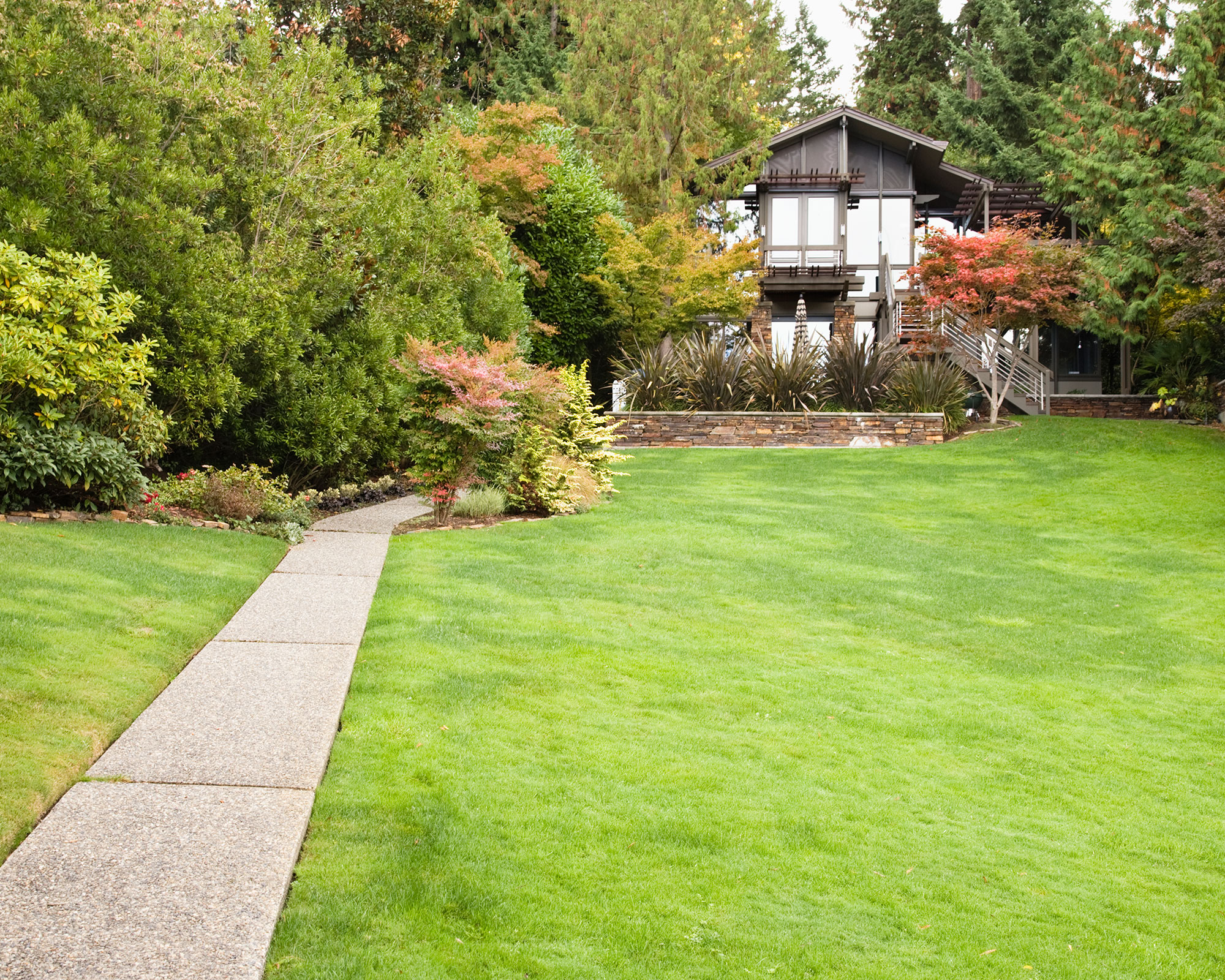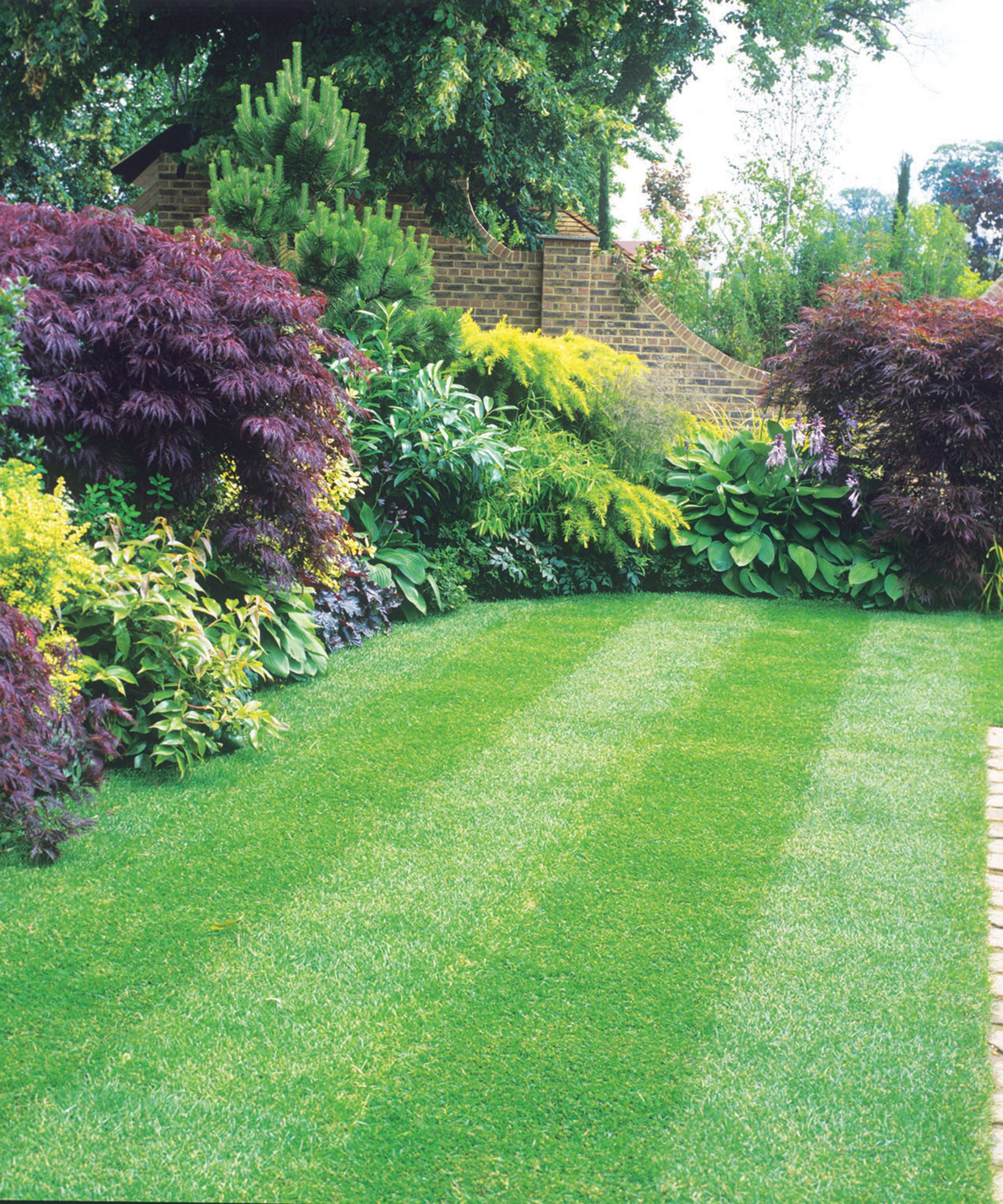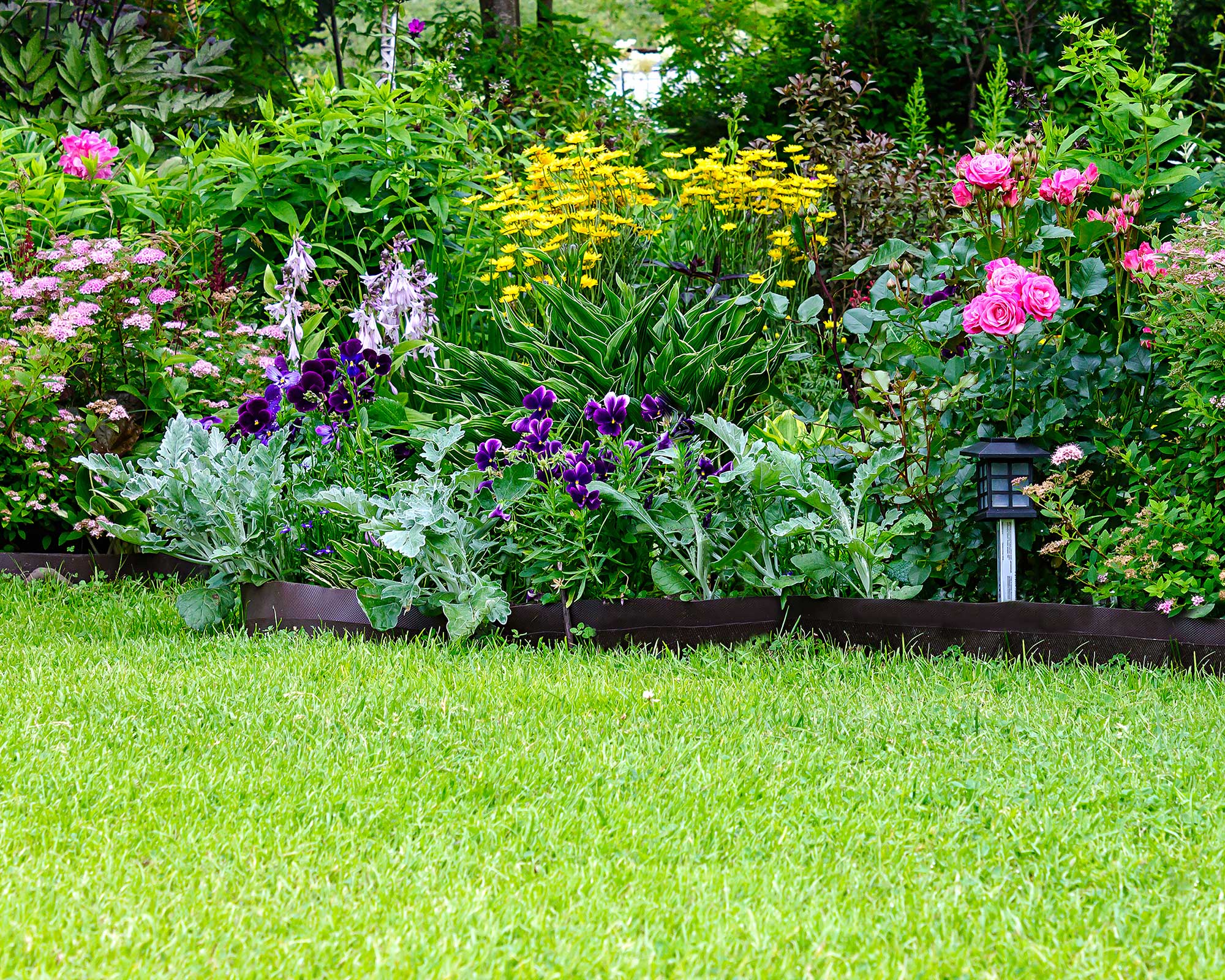When is the best time to apply lime to a lawn? These experts offer their advice
Find out when to apply lime to a lawn so you can enjoy healthy grass in spring and summer

If you've been wondering when is the best time to apply lime to a lawn, chances are you've heard of the practice but aren't sure why or when you should be doing it for the best results.
As it happens, applying lime is a lawn care step that is season-specific. Liming at the wrong time of year will render the whole process useless. However, if you apply lime correctly and at the right time of year, you'll reap the benefits, which include better growth and thicker, greener grass in the new season.
When is the best time to apply lime to a lawn?
The answer is: fall. According to Jeremy Yamaguchi, the CEO of Lawn Love, applying lime to your lawn during the fall season as part of your autumn lawn care 'allows the lime time to break down into your soil. By the time spring comes around again, it will have reached your grass roots and you can enjoy the benefits of a beautiful lawn with a more balanced soil pH.'
If you forgot to do it in fall, you can still do it during a spell of mild weather in early winter as part of your winter lawn care. Just don't lime the lawn when the ground is frozen as it won't penetrate properly. Also, Jeremy advises that 'liming your lawn in the summer can cause damage because the sun is too intense.'
While you're thinking about your fall gardening checklist, remember that fall can also be a good time to repair lawn patches ahead of winter.

Why should I add lime to my lawn?
You may be wondering why you even need to lime your lawn in the first place. The answer is that lime helps restore the correct soil pH needed for grass to thrive. Lime alkalizes soil that has become too acidic. You can test your soil with a simple soil test kit from Amazon if you're not sure what the pH is.
As a general rule, if your soil pH is below about 6.5, your lawn could benefit from an application of lime to reduce the acidity of the soil. Other signs of it being too acidic are if you notice that your lawn is growing very slowly or is growing a lot of lawn moss.
Lime also adds nutrients to your soil, namely calcium and magnesium. It's not a substitute for lawn fertilizer, but it contributes to healthy grass growth.
The most common type of lawn lime is Dolomitic lawn fertilizer, which is typically available in both powder and pellet form.
- Shop Dolomitic lawn fertilizer in the US: view at Amazon
- Shop Dolomitic lawn fertilizer in the UK: view at Amazon

Do you apply lime before or after rain?
The best time to apply lime to your lawn is after rainfall. The reason for this is that if you apply lime before heavy rain is forecast, the lime will just be washed away by the rain and you won't reap the benefit of liming.
'Don’t apply lime if there is rain in the forecast, or if your lawn is wet, stressed, wilted, or dormant,' says Jeremy Yamaguchi.
You should definitely avoid liming a lawn if the soil is soggy after a heavy rainfall and/or has puddles. Wait for the lawn to dry, then apply your lime. A light rain shower a few days after you've finished liming is acceptable.
Can you put lime on top of your grass?
Putting lime directly on top of your grass is not a good idea. According to Aditya Abhishek, founder of Agriculture Review, 'you can apply lime by using a spreader on top of your grass, and then irrigate lightly so that the soil can absorb lime properly.'
A spreader, which can be bought on Amazon, helps distribute lime evenly across your lawn. Dunking lime directly on top of the grass is likely to hinder penetration, making the whole process less effective.

Can you apply lime and fertilizer at the same time?
Yes, it's possible to do this but it may not deliver the best results. Dale Steven of Mowersandyardtools.com also points out that you should only do this while 'using the proper mix and handling the chemicals properly.'
You don't need to worry about lime and fertilizer harming your lawn; it's your hands you should be careful with. Always wear protective gloves while handling garden chemicals, and follow the correct advice on how often to fertilize a lawn too.
Anna writes about interior design and gardening. Her work has appeared in Homes & Gardens, Livingetc, and many other publications. She is an experienced outdoor and indoor gardener and has a passion for growing roses and Japanese maples in her outside space.
